The Easter Flower I Never Noticed (Until Now)
How a Postage Stamp, a Prairie Flower, and Easter Stopped Me in My Tracks ( This will take you about 3 1/2 mins. to read)
Image Editorial credit: Boris15 / Shutterstock.com
Happy Easter!
Did you know South Dakota has its own Easter flower named the Pasqueflower?
Its name comes from the French word Pâques—Easter—and it blooms in the early spring, often around Passover (pāsaḥ in Biblical Hebrew), when the earth begins to wake again.
It’s actually the state flower. I have a Substack contact, Tracy Rosenberg, who writes The Prairie Protectress. By reading her post, "Pasqueflower for Easter," I learned that this flower is already in bloom on her southeastern prairie land she stewards. I was surprised that I had never known about this flower, as my mother, Janette, was so proud of her South Dakota roots. (Well maybe I knew it as the Prairie Crocus.)
(No flowers are blooming in Duluth, where I live at this time. And in my teenage years, no flowers would bloom in Grand Forks, North Dakota, so early either.)
I have long admired the US Postal Stamp of the sod house and woman. In fact, that’s what my eyes focused on because it reminded me of Harvey Dunn’s painting “The Prairie is My Garden.” This was Janette’s favorite painting, and we had a print of it in our home when I was a teenager. Later, the painting moved with Janette to various locations, including Gallup, New Mexico, New Port Richey, Florida, and the Standing Rock Sioux Reservation, to keep her connected to her South Dakota Roots.
In the past, when I looked at the commemorative stamp, I focused on the sod house, and the woman and, but I didn’t register the lavender flowers in the foreground. Now I wonder how could I have not seen them? They are imminent in the foreground.
My father used boards from an outbuilding on his parent's farm to fashion an appropriate frame.
THIS IS A PHOTO taken at Christmastime around 2009 in Janette’s Grand Forks Condo on Duke Drive. You can see the framed print in the frame my father made for it out of rough barn boards on the left hand side.
In 2012, I told Janette I’d take her traveling and asked her where she wanted to go. To visit my cousins in South Dakota was her answer. While in South Dakota, we stopped in Brookings, home to South Dakota State University, the state's agricultural college. While we were there, we visited the South Dakota Art Museum. There we saw many original Harvey Dunn paintings. SDSU holds a permanent exhibit of Dunn’s paintings.
JANETTE AND NAOMI YAEGER posing beside the actual painting “The Prairie is my Garden,” at the South Dakota Museum of Art. (PHOTO BY NAOMI YAEGER)
I took the above photo in 2012, before I owned a smartphone. I was pretty proud of myself for setting the camera on a bench, setting the self timer and running back beside my mom to pose.
Harvey Dunn, the son of homesteaders, studied under the tutelage of Ada Caldwell at South Dakota Agricultural College in 1901. With the support and encouragement of Caldwell, Dunn continued his studies at the Chicago Art Institute and under renowned illustrator Howard Pyle. Dunn became a successful illustrator, and teacher, and was one of eight illustrators selected as the official artist for the American Expeditionary Forces during WWI.
Many of Janette’s (and by extendtion, my relatives) attended South Dakota State University. My father also attended for most of his bachelor’s studies. In my manuscript, I write about Uncle Vern, who attended Agricultural School, which at that time was more like a high school, but I don’t think he completed his studies.
I took the above photo because I loved that quote, and it was evident that Harvey Dunn’s painting resonated with Janette and many of her relatives.
My purpose is to make you see and above all to make you feel…
Harvey Dunn
When Janette decided it was time to move to a hospice apartment we took the painting with us to help make the new place feel like home.
We moved the painting to Parkwood Place for Janette’s final Journey. (Photo by Naomi Yaeger)
These flowers represent the resurrection of Jesus Christ.
From the website Foliage Friend:
Spiritual Meaning of Pasque Flowers
Pasque flowers are associated with a variety of spiritual meanings. In Christianity, these flowers represent the resurrection of Jesus Christ. It is believed that Pasque flowers bloomed on the day of Christ’s resurrection, and hence, they are considered to be symbolic of faith and hope.
Well, thanks for joining me on this journey this Easter to learn more about the South Dakota State Flower. Your interest and curiosity are greatly appreciated.
And if you live in a prairie state or province, keep your eyes peeled for a Pasqueflower.
This photo is from the post Pasqueflower for Easter by The Prairie Protectress
She says:
The pasqueflower, Near Threatened on the IUCN Red List, is disappearing due to land fragmentation, land being cropped, mined, and urbanized. But fortunately where land is preserved and cared for, pasqueflower continues to spread.
Tracy Rosenberg received the South Dakota Citizens Wildlife Award recently at the South Dakota Chapter of The Wildlife Society. Rosenberg was honored for her stewardship efforts in prairie restoration and habitat management of the former Blue Cloud Abbey grasslands, now Abbey Grasslands of the Prairie Coteau.




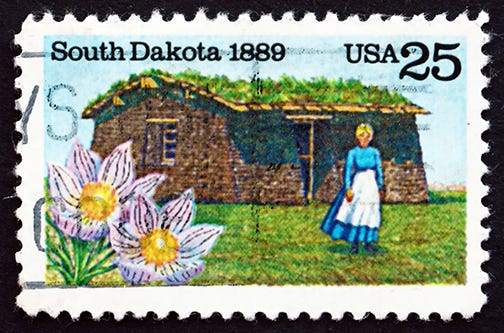
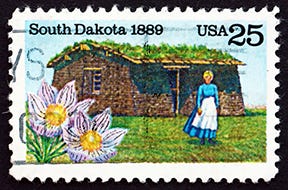
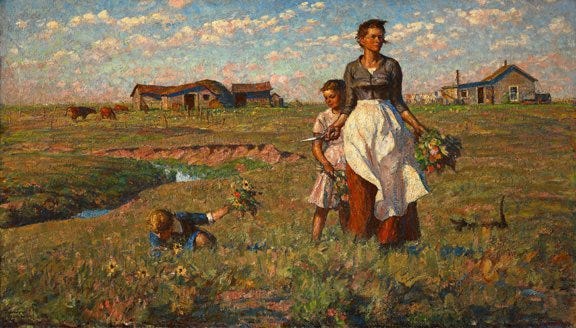

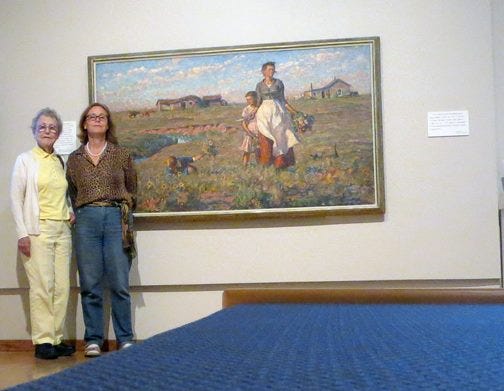

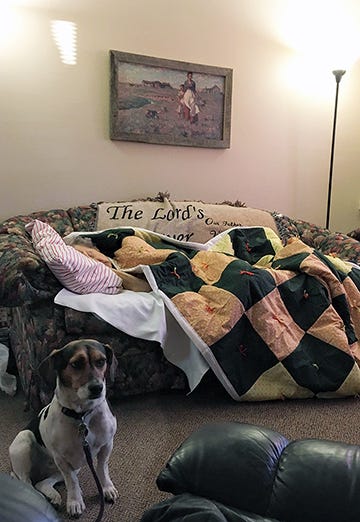

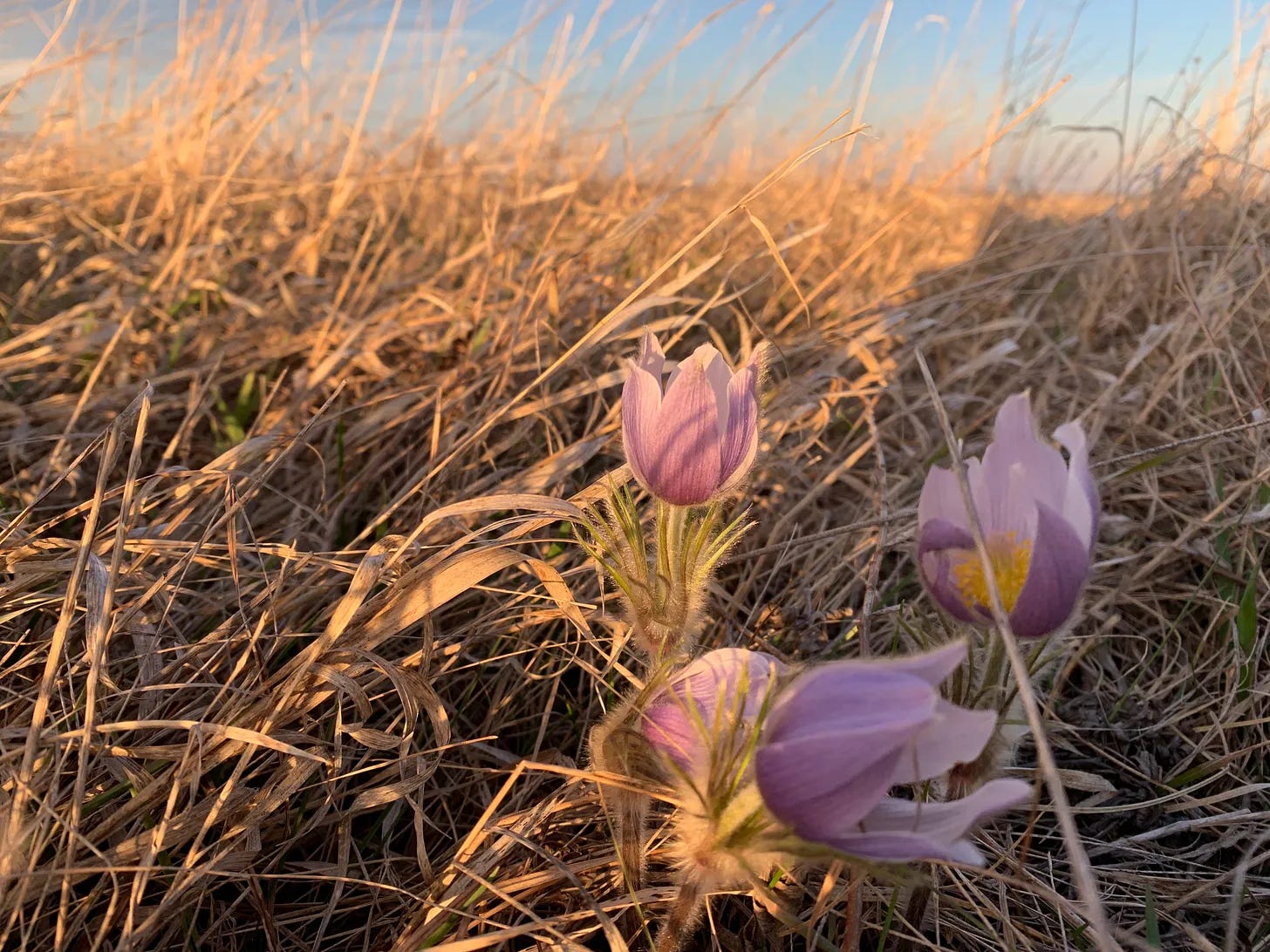

Dina Honor just did a note on the etymology of easter - with Paschal being the latinized version of the Hebrew Pesach (Passover). Pâques is French - and Pasqua is the Italian word. In English, we say Easter after the Germanic Goddess of Eostre!
I love the unusual knowledge found on commemorative stamps. Happy Easter!
I don't think I have ever seen a Pasque flower in real life. Enjoyed learning more about this prairie flower and why it appears on the commemorative stamp.